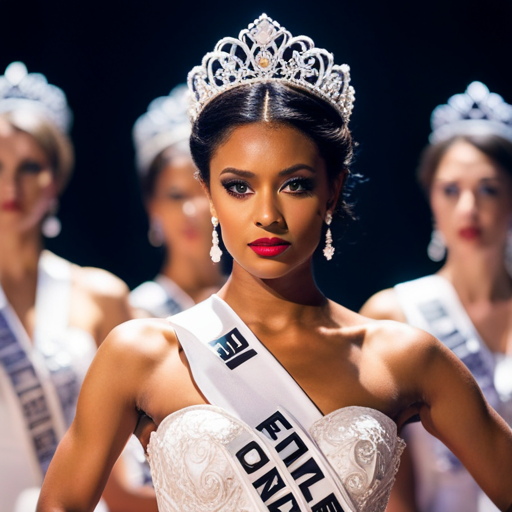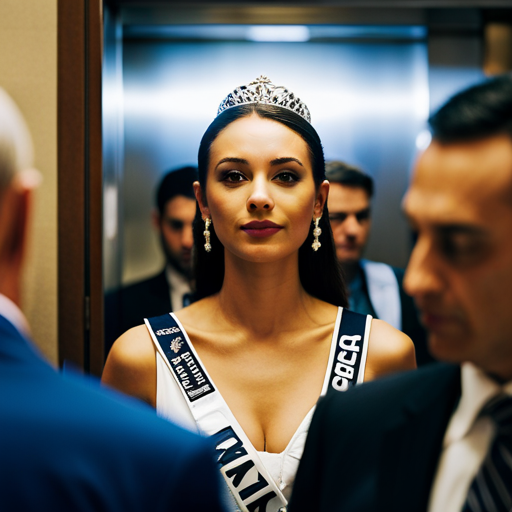Non-Verbal Communication Skills for Pageant Contestants

In the high-stakes world of pageantry, where words often take a backseat to poise and presence, mastering non-verbal communication is a vital skill for contestants.
From the subtle nuances of body language to the powerful impact of confident posture, the ability to convey grace, confidence, and charisma without uttering a word can make all the difference in the eyes of the judges.
This article delves into the essential non-verbal communication skills that can set pageant contestants apart on stage.
Importance of Non-Verbal Communication
The importance of non-verbal communication in a pageant contestant’s performance cannot be overstated. Non-verbal cues hold immense significance in conveying messages, particularly in a diverse and globalized world where cultural differences abound. Understanding and effectively utilizing non-verbal communication can enhance interpersonal relationships and create a positive impact in professional settings.
Cultural differences play a pivotal role in non-verbal communication, as gestures and expressions can hold varying meanings across different cultures. Pageant contestants must be adept at recognizing and respecting these differences to ensure effective communication with judges, audience, and fellow contestants from diverse backgrounds.
In professional settings, the ability to convey confidence, poise, and authenticity through non-verbal cues is crucial. Body language, facial expressions, and posture can significantly influence the perception of a contestant’s competence and charisma. Moreover, non-verbal communication can speak volumes about a contestant’s emotional intelligence and situational awareness, attributes that are highly valued in pageantry. Therefore, mastering non-verbal communication is an indispensable skill for pageant contestants, influencing their performance and overall presentation.
Transitioning into the subsequent section about ‘body language and posture’, let’s delve deeper into the specific non-verbal cues that can make or break a contestant’s success on stage.
Body Language and Posture
An understanding of body language and posture is essential for pageant contestants, as it significantly contributes to their overall non-verbal communication skills and stage presence. Here are key aspects to consider:
-
Correcting Posture: Maintaining good posture exudes confidence and poise. Pageant contestants should be mindful of standing tall with shoulders back, head held high, and maintaining a straight, yet relaxed, posture. This not only portrays elegance but also helps in commanding attention on stage.
-
Interpreting Gestures: Body language includes gestures that can convey various emotions and messages. Contestants must be aware of their hand movements, facial expressions, and overall body gestures to ensure they align with the image they want to portray. Understanding the impact of different gestures is crucial in effectively communicating with the audience and judges.
-
Engaging Body Language: Pageant contestants should use their body language to engage the audience, express confidence, and convey their personality. Movement and gestures should be purposeful, graceful, and in harmony with the overall presentation.
As body language and posture play a pivotal role in non-verbal communication, the next section will delve into the significance of facial expressions and eye contact in enhancing a contestant’s stage presence.
Facial Expressions and Eye Contact
One key aspect of non-verbal communication for pageant contestants is mastering the art of conveying emotions and establishing connections through facial expressions and eye contact. Facial expressions play a crucial role in conveying a contestant’s emotions and personality to the audience and judges. A genuine smile can exude warmth and approachability, while a furrowed brow can signal concern or intensity. It’s essential for contestants to practice a range of facial expressions to effectively communicate different emotions during various segments of the pageant.
Eye contact is another vital component of non-verbal communication. Maintaining direct and confident eye contact with the audience and judges demonstrates poise, self-assurance, and a genuine connection. It’s important for contestants to strike a balance between making eye contact and not appearing overly intense or intimidating. Additionally, using eye contact to engage with individual audience members can create a sense of intimacy and inclusivity.
Gestures and Movement
Mastering appropriate gestures and movement is crucial for pageant contestants to further enhance their non-verbal communication skills, complementing their facial expressions and eye contact with poised and graceful physical expressions. When on stage, pageant contestants should pay careful attention to their hand gestures, ensuring that they are purposeful and convey confidence. Additionally, stage movement should be fluid and intentional, with contestants moving gracefully and elegantly to captivate the audience.
Non-verbal cues play a significant role in pageantry, and contestants must utilize them effectively to convey their message. Their performance art should incorporate meaningful gestures and movements that align with the theme of their presentation, enhancing their overall stage presence and leaving a lasting impression on the judges and audience.
-
Hand gestures: Pageant contestants should use purposeful hand gestures that convey confidence and grace.
-
Stage movement: Fluid and intentional movement on stage is essential for captivating the audience.
-
Non-verbal cues and performance art: Utilizing meaningful gestures and movements that align with the presentation’s theme enhances overall stage presence and leaves a lasting impression.
Confidence and Poise
Demonstrating confidence and poise through controlled and purposeful movements is essential for pageant contestants to convey a strong non-verbal presence on stage, enhancing their overall performance. Stage presence is a critical aspect of a contestant’s performance, and it is achieved through a combination of inner strength and gracefulness.
Confidence is exhibited through posture, facial expressions, and body language, while poise is reflected in the contestant’s elegant and graceful demeanor.
A pageant contestant’s stage presence is a reflection of her inner confidence and self-assuredness. It is not just about walking elegantly but also about exuding a sense of assurance and composure in every step taken. Confidence is the key to commanding the stage and capturing the attention of the audience and judges.
Furthermore, poise complements confidence by adding an element of gracefulness to the contestant’s movements, creating an aura of sophistication and elegance.
In essence, confidence and poise are intertwined qualities that contribute to a contestant’s overall non-verbal communication skills. Mastering these attributes is crucial for leaving a lasting impression on the pageant stage.
Impact of Non-Verbal Communication on Judging
The non-verbal communication of pageant contestants significantly influences the judging process, impacting their overall evaluation and success in the competition. The judging criteria for pageants often encompass not only verbal articulation and beauty but also the non-verbal cues exhibited by the contestants. The impact of non-verbal communication on judging is profound, as it can sway the judges’ perceptions and evaluations.
Here are three key ways in which non-verbal communication influences the judging process:
-
Body Language: The way contestants carry themselves, their posture, gestures, and facial expressions play a pivotal role in how they are perceived by the judges.
-
Eye Contact: The ability of contestants to maintain confident and engaging eye contact with the judges showcases their level of comfort and self-assuredness on stage.
-
Overall Presence: The contestants’ overall presence, including their movement, grace, and composure, contributes significantly to the judges’ impression of their confidence and poise.
Frequently Asked Questions
How Can Pageant Contestants Use Non-Verbal Communication to Connect With the Audience During Their Performance?
Effective use of body language is crucial for audience engagement and connection during a performance. Pageant contestants should exude confidence, maintain eye contact, and exhibit positive gestures to enhance their stage presence and connect with the audience.
Are There Specific Techniques for Managing Nerves and Anxiety Through Non-Verbal Communication During the Competition?
Managing stress through non-verbal communication involves utilizing body language techniques, breathing exercises, and visualization techniques. These methods can help individuals project confidence, calm nerves, and appear poised, enhancing their overall performance in high-pressure situations.
What Are Some Common Mistakes That Pageant Contestants Make With Their Non-Verbal Communication and How Can They Be Avoided?
Common mistakes in non-verbal communication include lack of eye contact, fidgeting, and poor posture. To avoid these, contestants should practice active listening, maintain confident body language, and engage the audience with genuine gestures.
How Can a Pageant Contestant Adapt Their Non-Verbal Communication to Different Stages of the Competition, Such as the Interview Portion Versus the Talent Portion?
Adapting non-verbal communication to different stages of a competition, such as the interview and talent portions, entails showcasing confidence, poise, and authenticity. Connecting with the audience, managing nerves through body language, and honing skills through practice are critical.
Can Non-Verbal Communication Skills Be Improved Through Practice and Training, and if So, What Are Some Effective Exercises or Strategies for Improvement?
Improving non-verbal communication skills is achievable through practice and training. Effective exercises such as mirroring, body language analysis, and role-playing can enhance non-verbal communication. Strategies for improvement include self-awareness, active listening, and connecting with the audience.
Conclusion
In conclusion, the ability to effectively communicate non-verbally is crucial for pageant contestants to convey confidence, poise, and charisma on stage.
Through body language, facial expressions, and gestures, contestants can make a lasting impression on the judges and the audience.
How can pageant contestants harness the power of non-verbal communication to captivate and connect with their audience on a deeper level?





